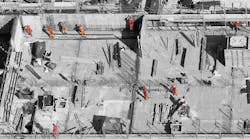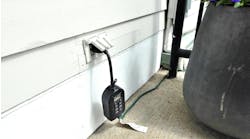In late 2016, Occupational Safety and Health Administration (OSHA) implemented new regulations to battle injuries and fatalities in the workplace. Violation fees rose to $12,934 for a less severe breach and $129,336 if the breach was willful or repeated. In case of failure to abate, each day beyond the abatement date costs another $12,934 ― a massive change compared to the previous $7,000 and $70,000 for severe violations.
The 237 workplace fatality cases that have occurred in the last six months ― compared to the 866 in 2017 ― foreshadow a successful year for safety and health awareness. Yet, not every business will see rising fines as an incentive to work on its safety compliance (Fig. 1, below). Here’s why that’s a mistake.
Some companies set a bad example
Many still remember the nightmare-incident of BP Texas City Refinery in 2009. The company was fined $87 million after inspections discovered more than 900 safety violations ― a record that still holds today. Years earlier, the company was responsible for an explosion that killed 15 workers and injured 170, resulting in a $21-million fine when OSHA found more than 200 safety breaches upon inspection.
Shockingly, BP failed not only to fix those violations, but a follow-up audit also found more than 700 new breaches on top. Nevertheless, when asked to pay $87 million for its lack of safety awareness, the multibillion-dollar firm didn’t even think to appeal ― some businesses of a certain size may simply permit risks like this.
Naturally, for smaller businesses, a comparable fine would almost instantly lead to bankruptcy, if not worse. Prison sentences issued for willful violation breaches are not unheard of, and life-long debts will most certainly await anyone faced with a serious charge. However, some employers question whether it is worth it to invest big money into safety compliance. What if a business spends thousands a year to ensure it is in line with OSHA regulations but never gets inspected?
Cost of compliance 60% less than a safety breach fine
A recent study by health and safety consultancy Arinite showed that an average small- to medium-size business spends about $53,000 per year on health and safety. Compare that to $129,336 for a single violation, and the results are obvious: Businesses will, on average, end up spending far less on compliance than on a fine ― 60% less, in fact.
Often, safety inspections uncover more than just one violation. That means if the company has willfully decided to ignore potential threats to its workers, the total costs shoot up immediately. For a severe accident, the employer will need to cover medical expenses, compensation, civil litigation, or liability. They might also need to allow extra time and money for workplace disruptions, worker replacement training, increased insurance premiums, attorney fees, and a general loss of trust and productivity. Bearing all these potential expenditures in mind, the actual accumulated cost of an occupational fatality can range between $1.4 million and $3 million.
How to create a safe working environment
The three most cited OSHA violations in 2017 were:
- Fall protection
- Hazard communication standard
- General scaffolding requirements
These violations occurred most frequently in the construction industry (see Fig. 2 and Fig. 3, below). While construction may inherently be a riskier profession, it doesn’t have to be a dangerous one if the right safety environment is in place.
A
A thorough risk assessment is the first step toward ensuring the workplace is safeguarded against injuries and diseases. This can be achieved by a range of risk assessments templated to cover different work activities, ensuring that systems are in place to inform employees about risk control measures, reviewing assessments frequently and updating policies.
It is important to pay special attention to dangers unique to the assigned workplace, which require specialist knowledge or expertise. If the employer is unsure whether certain stations impose threats or how to handle them, seeking the professional help of an auditor is always the safest option to make sure no dangers are overlooked. A second opinion and cross-checks are always valuable.
If a risk assessment failed to uncover all potential weaknesses and implement the needed precautions, the responsible person will always be the business owner, even if the mistake has been made by someone else. Therefore, it is important to choose a competent, reliable consultant with experience in the industry to carry out the risk assessment.
They are ultimately responsible for creating a culture of safety ― if everyone is on the same page when it comes to workplace safety, responsibility gets shared, and accidents are reduced.
The advantages of health and safety compliance go far beyond avoiding violation fines. It is proven how much a business can profit from a good safety strategy. Studies have shown that $1 invested in injury prevention can return between $2 and $6 further down the line. Increased productivity, contentment with work and the workplace, and improved retention help establish a sustainable and successful work environment ― a win/win situation for both employer and employee.
The Arinite Health and Safety Consultancy, based in London, provides health and safety services and support to a diverse customer base, including financial service companies, retail chains, schools, manufacturers, assembly plants, warehouses, transport companies, social enterprises and leisure facilities.






